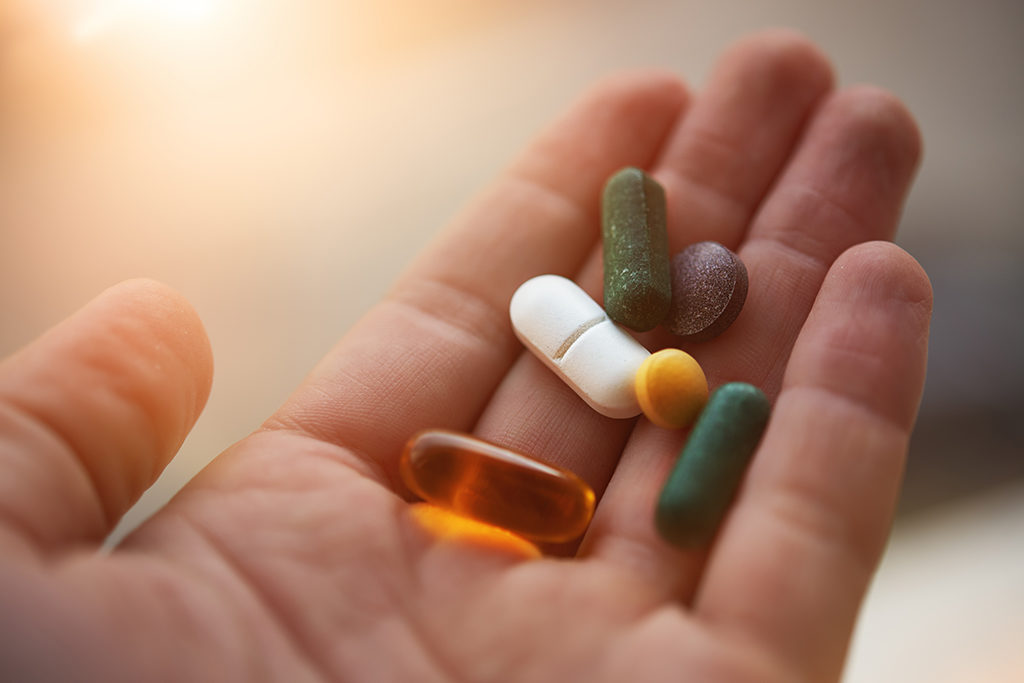How do you help prevent Anaphylaxis?
How do you help prevent anaphylaxis?
Help prevent anaphylaxis by steering clear of Anaphylaxis Phyl and his “what-if” friends whenever possible.
How do I prevent anaphylaxis?
Avoiding any of the “what-if” allergens that can trigger your symptoms is the best way to help prevent anaphylaxis.

Avoiding food triggers

Avoiding environmental triggers
When you are spending time outside, keep this information in mind.

Avoiding latex triggers
Latex can be in more products than you might realize.
Grocery shopping
Restaurants
Insect bites and stings
- Avoid walking barefoot in the grass
- Limit mowing the lawn or gardening
- Avoid drinking from open soft drink cans, where stinging insects can crawl inside
- Keep food covered when eating outdoors
- Avoid perfumes, hairsprays, and deodorants that have a sweet fragrance
- Avoid wearing bright colors with flowery patterns
Latex
- Latex gloves
- Balloons
- Adhesive bandages
- Therapy/resistance bands
- Pacifiers and baby bottle nipples
- Rubber bands, elastics, and orthodontic elastics
- Blood pressure cuffs
- Dishwashing gloves
- Erasers
- Spandex
- Latex mattresses
- Barrier contraceptive devices

Avoiding medication triggers
Anyone can have an allergic reaction to a drug.

Avoiding travel-related triggers
When you are traveling, remember these tips.
Medicines
- Make sure all your healthcare providers know the specific drug you took and the drug reactions you had
- Check with your healthcare providers about related drugs that you must avoid
- Check with your healthcare providers about the drugs you can take, if needed
- Wear an emergency medical alert bracelet
Commercial airline
- Notify the airline of your food allergy when you book your flight
- Keep your epinephrine auto-injector in its original packaging
- It is a good idea to have a prescription for your epinephrine auto-injector, along with a letter from your doctor stating your food allergy and indicating you need to carry your medication and your food and drink items with you
- It is also a good idea to avoid eating airline food. Check with the airline to see about packing your own food
- Consider getting a “medical alert” bracelet

Avoiding food triggers
Grocery shopping
Restaurants

Avoiding environmental triggers
When you are spending time outside, keep this information in mind.
Insect bites and stings
- Avoid walking barefoot in the grass
- Limit mowing the lawn or gardening
- Avoid drinking from open soft drink cans, where stinging insects can crawl inside
- Keep food covered when eating outdoors
- Avoid perfumes, hairsprays, and deodorants that have a sweet fragrance
- Avoid wearing bright colors with flowery patterns

Avoiding latex triggers
Latex can be in more products than you might realize.
Latex
- Latex gloves
- Balloons
- Adhesive bandages
- Therapy/resistance bands
- Pacifiers and baby bottle nipples
- Rubber bands, elastics, and orthodontic elastics
- Blood pressure cuffs
- Dishwashing gloves
- Erasers
- Spandex
- Latex mattresses
- Barrier contraceptive devices

Avoiding medication triggers
Anyone can have an allergic reaction to a drug.
Medicines
- Make sure all your healthcare providers know the specific drug you took and the drug reactions you had
- Check with your healthcare providers about related drugs that you must avoid
- Check with your healthcare providers about the drugs you can take, if needed
- Wear an emergency medical alert bracelet

Avoiding travel-related triggers
When you are traveling, remember these tips.
Commercial airline
- Notify the airline of your food allergy when you book your flight
- Keep your epinephrine auto-injector in its original packaging
- It is a good idea to have a prescription for your epinephrine auto-injector, along with a letter from your doctor stating your food allergy and indicating you need to carry your medication and your food and drink items with you
- It is also a good idea to avoid eating airline food. Check with the airline to see about packing your own food
- Consider getting a “medical alert” bracelet
IMPORTANT SAFETY INFORMATION
What is the most important information I should know about epinephrine injection, USP auto-injector?
-
- Epinephrine injection, USP auto-injector contains epinephrine, a medicine used to treat allergic emergencies (anaphylaxis). Anaphylaxis can be life-threatening, can happen within minutes, and can be caused by stinging and biting insects, allergy injections, foods, medicines, exercise or other unknown causes. Symptoms of anaphylaxis may include:
- trouble breathing
- wheezing
- hoarseness (changes in the way your voice sounds)
- hives (raised reddened rash that may itch)
- severe itching
- swelling of your face, lips, mouth, or tongue
- skin rash, redness, or swelling
- fast heartbeat
- weak pulse
- feeling very anxious
- confusion
- stomach pain
- losing control of urine or bowel movements (incontinence)
- diarrhea or stomach cramps
- dizziness, fainting, or “passing out” (unconsciousness).
- Always carry your epinephrine injection, USP auto-injector with you because you may not know when anaphylaxis may happen. Talk to your healthcare provider if you need additional units to keep at work, school, or other locations. Tell your family members, caregivers, and others where you keep your epinephrine injection, USP auto-injector and how to use it before you need it. You may be unable to speak in an allergic emergency.
- When you have an allergic emergency (anaphylaxis)
- Use epinephrine injection, USP auto-injector right away.
- Get emergency medical help right away. You may need further medical attention. You may need to use a second epinephrine injection, USP auto-injector if symptoms continue or recur. Only a healthcare provider should give additional doses of epinephrine if you need more than 2 injections for a single anaphylaxis episode.
What is epinephrine injection, USP auto-injector?
- Epinephrine injection, USP auto-injector is a disposable, prefilled automatic injection device (auto-injector) used to treat life-threatening, allergic emergencies including anaphylaxis in people who are at risk for or have a history of serious allergic emergencies. Each device contains a single dose of epinephrine.
- Epinephrine injection, USP auto-injector is for immediate self (or caregiver) administration and does not take the place of emergency medical care. You should get emergency medical help right away after using epinephrine injection, USP auto-injector.
- Epinephrine injection, USP auto-injector is for people who have been prescribed this medicine by their healthcare provider.
What should I tell my healthcare provider before using epinephrine injection, USP auto-injector? Before you use epinephrine injection, USP auto-injector, tell your healthcare provider about all your medical conditions, especially if you:
- have heart problems or high blood pressure
- have diabetes
- have thyroid problems
- have asthma
- have a history of depression
- have Parkinson’s disease
- have any other medical condition
- are pregnant or plan to become pregnant
- are breastfeeding or plan to breastfeed
Tell your healthcare provider about all the medicines you take, including prescription and over-the-counter medicines, vitamins and herbal supplements. Tell your healthcare provider of all known allergies. Especially tell your healthcare provider if you take certain asthma medicines.
How should I use epinephrine injection, USP auto-injector?
- Each epinephrine injection, USP auto-injector contains only 1 dose of medicine.
- Epinephrine injection, USP auto-injector should only be injected into the middle of the outer thigh (upper leg). It can be injected through clothing, if needed.
- Read the Instructions for Use in the Patient Information Leaflet for information about the right way to use epinephrine injection, USP auto-injector.
- Your healthcare provider will show you how to safely use the epinephrine injection, USP auto-injector.
- Use epinephrine injection, USP auto-injector exactly as your healthcare provider tells you to use it.
What are the possible side effects of epinephrine injection, USP auto-injector? Epinephrine injection, USP auto-injector may cause serious side effects.
- Epinephrine injection, USP auto-injector should only be injected into the middle of your outer thigh (upper leg). Do not inject epinephrine injection, USP auto-injector into your veins, buttocks, fingers, toes hands or feet.
If you accidently inject epinephrine injection, USP auto-injector into any other part of your body, go to the nearest emergency room right away. Tell the healthcare provider where on your body you received the accidental injection.
- Rarely patients who use epinephrine injection, USP auto-injector may develop infections at the injection site within a few days of an injection. Some of these infections can be serious. Call your healthcare provider right away if you have any of the following at an injection site:
- redness that does not go away
- swelling
- tenderness
- the area feels warm to the touch
- If you inject a young child with epinephrine injection, USP auto-injector, hold their leg firmly in place before and during the injection to prevent injuries.
- If you have certain medical conditions, or take certain medicines, your condition may get worse or you may have more or longer lasting side effects when you use epinephrine injection, USP auto-injector. Talk to your healthcare provider about all your medical conditions.
Common side effects of epinephrine injection, USP auto-injector include
- faster, irregular or “pounding” heartbeat
- sweating
- headache
- weakness
- shakiness
- paleness
- feelings of over excitement, nervousness, or anxiety
- dizziness
- nausea or vomiting
- breathing problems
These side effects may go away with rest. Tell your healthcare provider if you have any side effect that bothers you or that does not go away. These are not all the possible side effects of epinephrine injection, USP auto-injector. For more information, ask your healthcare provider or pharmacist. Call your healthcare provider for medical advice about side effects. You may report side effects to FDA at 1-800-FDA-1088.
Keep epinephrine injection, USP auto-injector and all medicines out of the reach of children.
What are the ingredients in epinephrine injection, USP auto-injector? Active Ingredient: epinephrine Inactive Ingredients: sodium chloride, chlorobutanol, sodium bisulfite, hydrochloric acid and sodium hydroxide, and water.
You are encouraged to report negative side effects of prescription drugs to the FDA. Visit www.fda.gov/medwatch or call 1-800-FDA-1088. To report SUSPECTED ADVERSE REACTIONS, contact Amneal Pharmaceuticals LLC at 877-835-5472, option 1 or email DrugSafety@amneal.com. Please click here for full Prescribing Information including the Patient Information Leaflet.
For more information and video instructions on the use of epinephrine injection, USP auto-injector, go to www.epinephrineautoinject.com or call 1-800-934-6729.
Indication: The epinephrine injection, USP auto-injector is a disposable, prefilled automatic injection device (auto-injector) used to treat life-threatening, allergic emergencies including anaphylaxis in people who are at risk for or have a history of serious allergic emergencies.
- Epinephrine injection, USP auto-injector contains epinephrine, a medicine used to treat allergic emergencies (anaphylaxis). Anaphylaxis can be life-threatening, can happen within minutes, and can be caused by stinging and biting insects, allergy injections, foods, medicines, exercise or other unknown causes. Symptoms of anaphylaxis may include:
IMPORTANT SAFETY INFORMATION
What is the most important information I should know about epinephrine injection, USP auto-injector?
- Epinephrine injection, USP auto-injector contains epinephrine, a medicine used to treat allergic emergencies (anaphylaxis). Anaphylaxis can be life-threatening, can happen within minutes, and can be caused by stinging and biting insects, allergy injections, foods, medicines, exercise or other unknown causes. Symptoms of anaphylaxis may include:
- trouble breathing
- wheezing
- hoarseness (changes in the way your voice sounds)
- hives (raised reddened rash that may itch)
- severe itching
- swelling of your face, lips, mouth, or tongue
- skin rash, redness, or swelling
- fast heartbeat
- weak pulse
- feeling very anxious
- confusion
- stomach pain
- losing control of urine or bowel movements (incontinence)
- diarrhea or stomach cramps
- dizziness, fainting, or “passing out” (unconsciousness).
